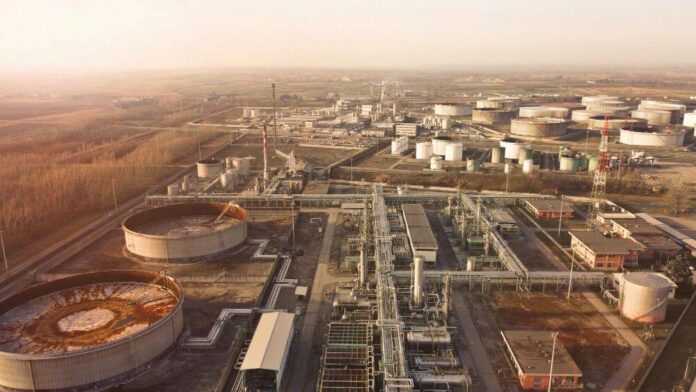The oil and gas industry is well-established, having provided a reliable source of energy since its inception in the mid-19th century. It is also gigantic, with an estimated internal economy of USD $4.65 trillion, as well as quite profitable, with the world’s five largest oil and gas companies taking in nearly USD $1.5 trillion in collective profit as of 2022.
While these exact figures may not be widely known, their underlying sentiment definitely is. Ask any person on the street what they know about oil companies and they’ll probably tell you they’re some of the largest businesses in the world, engaging in extraction operations throughout deserts, oceans, and arctic tundra, and making a handsome amount of money in the process. But what many people may not realize is that the oil and gas sector is currently in the middle of a concerted and long-term effort to decrease its impact on the environment.
Who is James Kydd?
James Kydd is a Vice President with a Calgary-based energy firm and a veteran of Western Canada’s oil and gas sector. During his 20-year-plus career, he has been charged with overseeing the construction and operation of several critical pipelines, like the Trans Mountain Expansion Pipeline, the Coastal GasLink Pipeline, and the North Montney Mainline. With a resume that also includes positions such as Senior Operations Manager, Construction Manager, and Project Manager at some of Alberta’s largest energy companies, Kydd is uniquely positioned to offer insights into how the industry writ large has changed to become more eco-friendly over the past few years.
The Push for Sustainability in Oil and Gas
“The oil and gas industry plays a massive part in powering the world. In fact, the latest data indicates we account for 80% of global energy production,” says Kydd. “With that being said, we do acknowledge the need to reduce the emissions we create while still meeting the world’s energy needs. For quite a while now, there has been an industry-wide consensus that we need to adopt more sustainable business practices in order to mitigate our carbon footprint as much as possible.”
Carbon Capture, Utilization, and Storage (CCUS)
One way the sector is accomplishing this lofty goal is through a process called Carbon Capture, Utilization, and Storage (CCUS). CCUS technology captures carbon dioxide emissions from industrial processes and either stores them underground or repurposes them for other uses, such as oil recovery or synthetic fuel production. “Carbon capture technology is one of the most promising ways we can directly tackle emissions while continuing to provide the energy the world relies on,” says Kydd. “With many CCUS projects already underway, we’re seeing a shift toward integrating this tech into everyday operations, making it a practical and scalable solution, and creating the effect of substantially cutting down the amount of carbon we put into the air.”
Advanced Methane Detection and Reduction
Another key innovation is the use of advanced methane detection and reduction technologies. Methane is a potent greenhouse gas, and its reduction has become a top priority for the oil and gas industry. New tools like satellite monitoring, leak detection powered by artificial intelligence, and infrared imaging are helping oil and gas companies identify and fix leaks faster than ever before. As James Kydd explains, “The recent strides that have been made regarding methane have taken the whole industry by storm. AI-driven monitoring systems, for example, are allowing us to detect leaks in real time and respond immediately. It’s really exciting to see.”
Electrification of Oil and Gas Operations
Electrification is also playing a role in making oil and gas operations more sustainable. Many companies are replacing old, out-of-date, diesel-powered equipment with newer electric alternatives, including electrified drilling rigs and offshore platforms powered by renewable energy. This transition serves to cut emissions, and also to improve efficiency and reduce long-term operational costs, making it a winning idea for all parties involved.
“When it comes to adopting more sustainable business practices, the way forward in the oil and gas industry is to highlight how it’s not only a net positive for the environment, it will also save companies money—both in the short and long run. That’s just the reality of how you get everyone, like executives and shareholders on board,” Kydd remarks. “But once you do that, you pave the way for the positive effects. Take the recent push to electrify operations using renewable sources—it reduces fuel costs and improves efficiency, which means companies are seeing real economic benefits, all the while lowering their carbon footprint.”
The Future of Sustainable Oil and Gas
Taken together, these innovations, along with ongoing research into alternative energy integration and emissions reduction strategies, illustrate how the oil and gas industry is actively adapting to the modern energy landscape. The sector seems to acknowledge, in a way it historically hasn’t, that sustainability is no longer a choice—it’s a necessity for the preservation of the planet and everyone who lives on it.
“Ordinary people sometimes assume our industry isn’t changing, but that couldn’t be further from the truth,” says James Kydd. “We’re constantly evolving our best practices and investing in new technologies to make extraction and transportation operations cleaner, safer, and more sustainable. The future of energy depends on a balanced approach, and we in the oil and gas sector are firmly committed to being a big part of the solution.”







